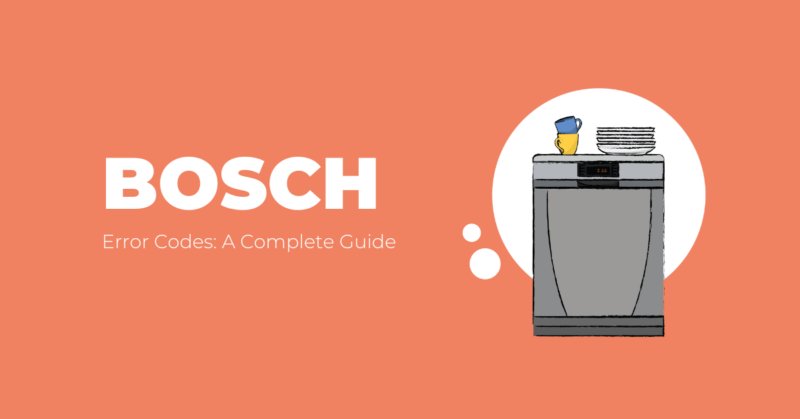
This error code, F1, is a way for your dishwasher to tell you that something isn’t quite right. It’s like when your car’s check engine light pops on—alarming at first, but usually fixable with a bit of investigation. Error code F1 often relates to issues within the water intake or drainage system. Understanding these potential problems can help you get your dishwasher back in working order without too much hassle. Let’s dive in and explore the common causes of this pesky error and what you can do about them.
Understanding the Water Inlet Valve
The water inlet valve plays a crucial role in your dishwasher’s operation. Think of it like the gatekeeper that controls the flow of water into the machine. If this valve fails, it’s akin to having a kink in your garden hose—water can’t flow properly, if at all. This can trigger the F1 error code because your dishwasher detects something is stopping the water supply.
You might be wondering, “How does a water inlet valve even fail?” Several factors could be at play. Over time, the valve can wear out or become clogged with mineral deposits, especially if you live in an area with hard water. It’s like an old faucet that starts leaking or running sporadically. In some cases, the valve may become electrically malfunctioned, meaning it doesn’t get the signal to open or close properly.
To troubleshoot this, you could start by inspecting the valve for visible blockages or damage. It might require a bit of elbow grease, but you can clean the valve or even replace it if necessary. Just remember to turn off the power and water supply before you get started to avoid any mishaps. If you’re not feeling confident, it might be time to call a professional. Keeping an eye on the valve’s condition is a good habit, as it can save you from more severe issues down the road.
Addressing Clogged or Faulty Drain Hoses
Let’s pivot to another potential culprit: the drain hose. In the world of household appliances, the drain hose acts like the dishwasher’s plumbing system, directing dirty water out of the machine. When it’s clogged or faulty, it’s like having a blocked sink—water can’t exit properly, causing a backup and triggering the F1 error code.
You might be wondering how these hoses get clogged. It’s usually a mix of food particles, grease, and soap residue that builds up over time. Imagine pouring a bit too much fat down your kitchen sink; eventually, it clogs, and a similar principle applies here. A kinked or incorrectly installed hose can also lead to restricted water flow.
To tackle this, you’ll want to ensure the hose is free from blockages. Disconnect it and give it a thorough rinse. Be on the lookout for any visible damage—if it’s worn out, you might need a replacement. Also, ensure that the hose is positioned correctly without any twists or kinks that could impede water flow. With a bit of care and maintenance, you can keep your dishwasher’s drain hose in top condition, preventing future errors.
Inspecting the Float Switch
The float switch is another small but mighty component that can lead to big problems if it malfunctions. Much like a float in your toilet tank, the float switch in your dishwasher acts as a sensor, communicating water levels to the control system. If it gets stuck or damaged, it might send incorrect signals, triggering the F1 error code due to perceived flooding or insufficient water levels.
Why would a float switch get stuck? Often, debris or food particles find their way into the small crevices around the float, trapping it in place. Imagine a small pebble under your car’s pedal, making it hard to press down—it’s annoying and disrupts the function. Regular cleaning can help prevent such issues.
If you suspect a problem with the float switch, start by cleaning it carefully. It usually involves removing the lower dish rack to access the float, which you can gently lift and clean with warm, soapy water. If the switch still doesn’t move freely after cleaning, it might be time to consider professional help, as electrical components may need replacement.
Dealing with Electronic Control Failures
Lastly, let’s talk about the electronic control board. This is the brain of your dishwasher, controlling various functions and ensuring everything works harmoniously. When something goes wrong here, it can be like having a miscommunication in an orchestra—everything’s out of sync, leading to error messages like F1.
Electronic controls can experience failures due to power surges, moisture exposure, or simply age. If your dishwasher frequently displays error codes or behaves erratically, it might be time to check the control board. It’s similar to when your computer starts glitching; sometimes it’s a simple reset, while other times deeper diagnostics are needed.
Before you jump to any conclusions, ensure the dishwasher is disconnected from power and check for visible signs of damage or moisture on the control board. Sometimes, a simple reset by unplugging can resolve minor glitches. However, if problems persist, consulting a professional is wise, as replacing or repairing electronic components can be complex.
Understanding these common causes gives you a leg up in maintaining your Bosch dishwasher. With a bit of care and prevention, you can keep those error codes at bay and enjoy hassle-free dishwashing.